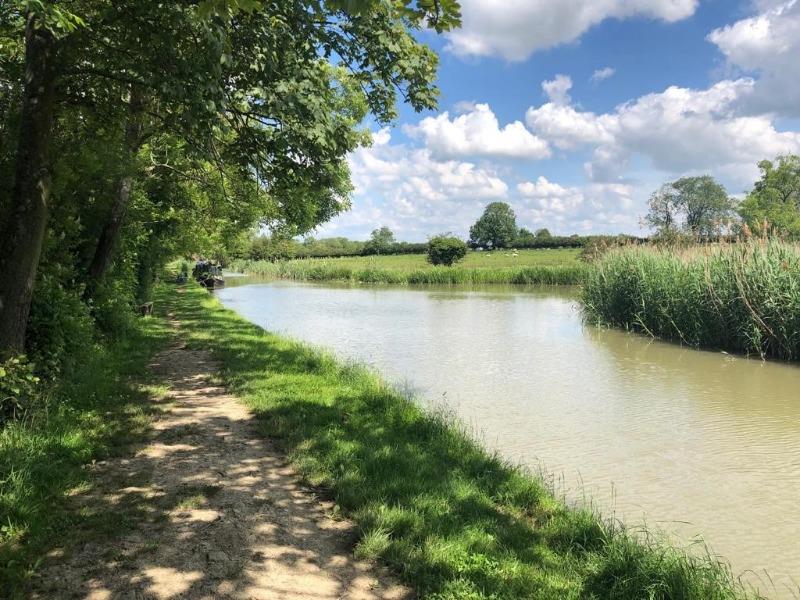A winding hole is a widened area of a canal (usually in the United Kingdom), used for turning a canal boat such as a narrowboat.

History
Winding holes were originally important to enable efficient commercial carrying along the canal network. They were built at or near wharves where working boats would need to turn. They were sized appropriately to the largest boat that could reach the site. Since those days, the requirements for turning have changed as leisure boating has taken over from cargo carrying. Many winding holes have become unusable, or usable only by shorter boats, owing to silting, vegetation growth, permanently moored boats or access restrictions by landowners.
Because the average width of a canal channel (about 30' to 40' feet) is less than the length of a full-size narrow boat (72') it is not usually possible to turn a boat in the canal. Winding holes are typically indentations in the off-side (non-towpath side) of the canal, allowing sufficient space to turn the boat. On navigable rivers and areas near the coast nautical terms are found, such as ‘swinging area’, ‘turning space’ or just ‘wide’. In addition to officially designated spaces, there are also informal turning points where the canal widens - for instance at junctions or marina entrances.
When a boater wishes to make use of a turning facility, there are practical factors and matters of etiquette to be considered.
The Origin of the word 'Winding Hole'
The word is commonly believed to derive from the practice of using the wind to assist with the turn. The Old English word for turn - "Windan", (pronounced with a short I (as in windlass, a handle for winding. Old English was in use up to and including the 18th century when the canals where built. Much UK canal terminology comes from spoken rather than written tradition and from bargees who did not read or write. It is also possible that the word has a similar derivation to that of the windlass, which derives from the Old Norse "vinda" and "ás"—words currently used in Iceland—where the modern word for "windlass" is "vinda
(From Wikipedia)
Use
A winding hole consists of a "notch" in the canal bank. A turning boater inserts the bow of the boat into the notch and swings the stern round. In the days of horse-drawn boats, this was accomplished using bargepoles.
Etiquette for using winding holes
As with other aspects of boating, there is an etiquette in both planning and executing a turn. Knowing where the winding holes are and planning which one to use is the first step.
On arrival, the objective is to turn in a way that causes as little inconvenience to others as possible, including other moving boats and moored boats. It may be necessary to signal your intentions to others (horn signals are defined in the CRT "Boaters Handbook”, although rotating your hand in the air may be more widely understood). Consider whether it is sensible to allow any moving boats to pass first, and make sure you signal clearly. If you are following a boat approaching a winding hole, bear in mind that they may wish to turn, so keep clear. Don’t try to pass them while they are turning unless they signal clearly for you to do so. As a general rule don’t moor in such a way as to obstruct the use of a winding hole.
Practical Advice
When it comes to actually turning, the most helpful pieces of advice are to be sensible and to be prepared to change your plan. The aim should be to keep the propeller and rudder away from any shallow areas or debris, and to keep turbulence to a minimum; trying to avoid stirring up the mud as far as possible.
For these reasons, the default approach is to put the bow of the boat into the winding hole and keep the stern on the towpath side. However, conditions may dictate varying this, particularly with the wind and the flow on rivers and on some canals. Both wind and current can be used to help turn the boat – and equally, both can cause difficulties if they are not taken into account.
Taking a rope ashore on the towpath and using it to help the turn can reduce the need for engine power and hence turbulence. Also bear in mind the effects of ‘propeller walk’ (the tendency of the propeller to cause the boat to rotate as well as move forwards or backwards, which is much greater in reverse gear) and try to use it to help rather than hinder the manoeuvre.